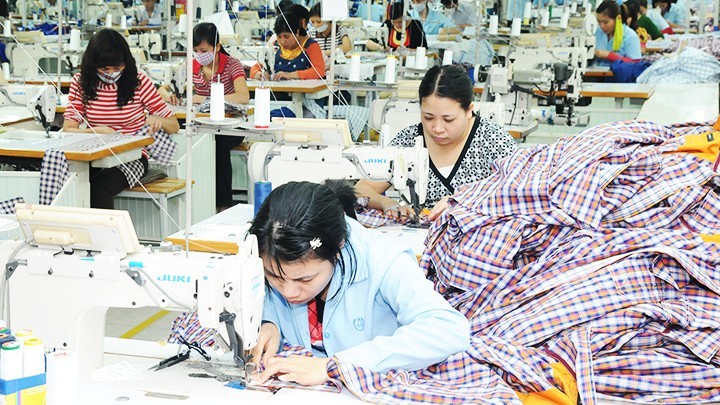The US’s application of new tariff policies will affect Vietnam’s exports to the US.
However, the current context is also an opportunity for businesses to restructure their export activities in a harmonious and sustainable direction, focusing on expanding and exploiting new export markets. Along with the direction of the Government, the efforts of ministries, agencies, trade offices, and the export business community have proactively developed scenarios for adaptive solutions. Including promoting market expansion, ensuring the export growth target in 2025.
Accounting for 60% of the export market share, Garment 10 Corporation said that the United States is still their largest export partner. However, they are currently looking for new markets to diversify products and stabilize exports.
Ms. Nguyen Thi Phuong Thao – CEO of Garment 10 Corporation said: “We have to save costs as well as increase productivity through investment in equipment and technology to have the most competitive prices. Currently, we are maintaining and promoting the markets of Japan, EU, Australia and the Middle East”.
The leather and footwear industry also has a high export proportion to the United States. To reduce tax rates, businesses said they will increase imports of leather materials from this market.
javascript:if(typeof(admSspPageRg)!=’undefined’){admSspPageRg.draw(2030173);}else{parent.admSspPageRg.draw(2030173);}
“We try to diversify our markets, and on the other hand, increase leather imports from the US to rebalance the import ratio and increase the US proportion in our products,” said Ms. Phan Thi Thanh Xuan – Vice President of the Vietnam Leather, Footwear and Handbag Association (LEFASO).
As for wood businesses, in addition to increasing imports of raw wood from the United States, they also try to enter niche markets to expand their export scale.
Mr. Ngo Sy Hoai – Vice President and General Secretary of the Vietnam Timber and Forest Products Association said: “The markets in the Middle East, Australia and ASEAN countries are small. However, we always keep in mind that we should shift from processing according to orders and designs from abroad to proactively designing designs and even building brands.”
Associations also expect that with the participation in 17 free trade agreements with 60 countries and territories, Vietnamese goods will have the opportunity to access new markets. However, Vietnamese enterprises also need to diversify their sources of raw materials and improve the technology content of each order to avoid competition with processing orders.
















